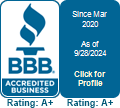
Your Bank Account is Negative: What Next?
Most people experience one of life’s financial “uh-oh” moments—a negative bank balance—at some point, sooner or later. You accidentally stop tracking how much money is in your account, and the balance becomes negative.
Though this is not a positive thing, remain upbeat and do not get flustered. It is critical to take fast action to reduce any potential financial harm. Even better: You can take a few steps to minimize bank fees and avoid a negative balance.
Why Would a Bank Account Be Negative?
When your balance drops below $0, you often experience a negative bank account. In other words, if you withdraw money when you do not have sufficient cash in your bank account, and the bank covers the difference, the balance will be negative. It is also called an overdraft.
For example, imagine having $500 in your account but writing a cheque for $550 because you mistakenly believed you had a balance of $600. Your account balance would be $50 lower if the bank paid the $550. The money must be returned, perhaps with interest. We refer to this as an overdraft fee.
What brings on a Negative Balance in a Bank Account?
Negative bank balances typically happen accidentally. You could overdraw your account if:
- You lost track of the balance on your account and took cash out of an ATM or purchased with your debit card or a cheque.
- Your account did not receive a payment you made right away.
- You forgot about a recurrent auto-payment.
- A cheque you wrote gets to the bank while your balance is low because someone delayed cashing it.
- Automated bill payments took place before your paycheck went into your account.
- You took the money from a joint bank account without realizing the other account holder had already used some of it.
Negative Bank Account Consequences
If you are wondering what would happen if your bank account went into the red, here is a list of potential outcomes.
Fees
If you spend more money than you have in your account, your bank may reimburse the difference and impose an overdraft fee. Overdraft charges typically cost $35. You are essentially charged for the brief “loan” to pay for the transaction. The number of daily overdraft fees that your bank can impose may be restricted.
On the other hand, if the bank rejects a transaction due to insufficient funds in the account, the customer may be charged a non-sufficient funds (NSF) fee. Although there will not be a negative bank balance, NSF fines typically cost roughly the same as overdraft costs.
Account Closure
If you do not deposit money to offset your negative balance or have too many failed checks or overdrafts to the point where bank officials raise an eyebrow, the bank may close your account.
Additionally, the number of transfers you can make between accounts may be restricted. The bank can cancel one of your accounts if you go over this cap by often transferring funds to pay bills from your checking account to your savings account.
Effect On Credit Rating
Having a negative balance might indirectly impact your credit. For instance, if you attempt to use your credit card to make a payment due to inadequate or insufficient funds, you will end up late and can damage your credit. It is because your payment history is the main component of your credit score (35%).
In addition, a bank that closed your account because of your frequent overdrafts can assign your debt to a collection agency. If that company alerts the credit bureaus of your unpaid debt, your credit score will suffer, and it will be difficult for you to obtain a credit card or approval for a loan in the future.
It Could Be Challenging To Open A New Bank Account.
Customers may find it difficult to open a new account if they have a problematic account history. A checking account reporting company that tracks bank and credit union accounts for irregularities may keep information for seven years after receiving notification from a bank.
Also, it can be more challenging for the customer to open a new bank account if competing institutions find out about it through the company’s reports. One of the extra restrictions the new bank may impose, along with higher banking fees for the customer, may be a decreased daily withdrawal limit
Guidelines To Avoid A Negative Bank Account
Avoiding having a negative account balance in the first place is the wisest course of action. By following these tips, you can lessen the likelihood of ending up with a negative balance:
- Monitor your account regularly online to keep track of your available balances and transactions.
- Enroll in balance alerts or low-balance warnings from your bank so that your bank notifies you through text or email if your balance falls below a predetermined level. These alerts can serve as a gentle reminder to add cash to your account before it goes into negative or to stop withdrawing money if you have insufficient funds.
- Use direct deposit to ensure you know the arrival date of your paycheck, benefits check, or other sources of money.
- Consider connecting your accounts so funds can be transferred from one account to another for any unexpected shortfall. However, banks frequently charge a fee for automatically transferring funds across linked accounts to make up a deficit. Although you could pay for this out of your pocket, the amount is often less than an overdraft protection fee.
- If you do not sign up for overdraft protection, banks will not charge you overdraft fees for ATM withdrawals and debit card payments. However, if you attempt to overdraw an account via check or online, the bank will probably charge you penalties for insufficient funds. There are drawbacks, though. If you cannot pay on time, your creditors could charge you fees. They could also notify the credit bureaus about missing payments, which might reduce your credit ratings.
What Should You Do If Your Account Is Overdrawn?
Do not use an overdrawn account to make additional payments until the negative balance has been corrected by making a deposit. Continued withdrawals from a negative account would worsen the situation by pushing it farther into the red and adding extra fees.
Check for any upcoming automated payments so that you may stop them before they go into your account.
Then, follow these instructions to balance your account to determine how much cash is required to return to a positive balance.
- Verify your records of payments made or received with your most current statement or online account activity ledger provided by your bank.
- Cross off every transaction in the bank’s records except the ones not processed yet.
- Take note of the bank record’s final balance. Then, deduct any payments that are not processed, deduct any fees not recorded by the bank, and add any outstanding deposits.
The result is an updated picture of how deficient your account is.
Finally, make a transfer into your account that will entirely offset the negative amount, costs included.


